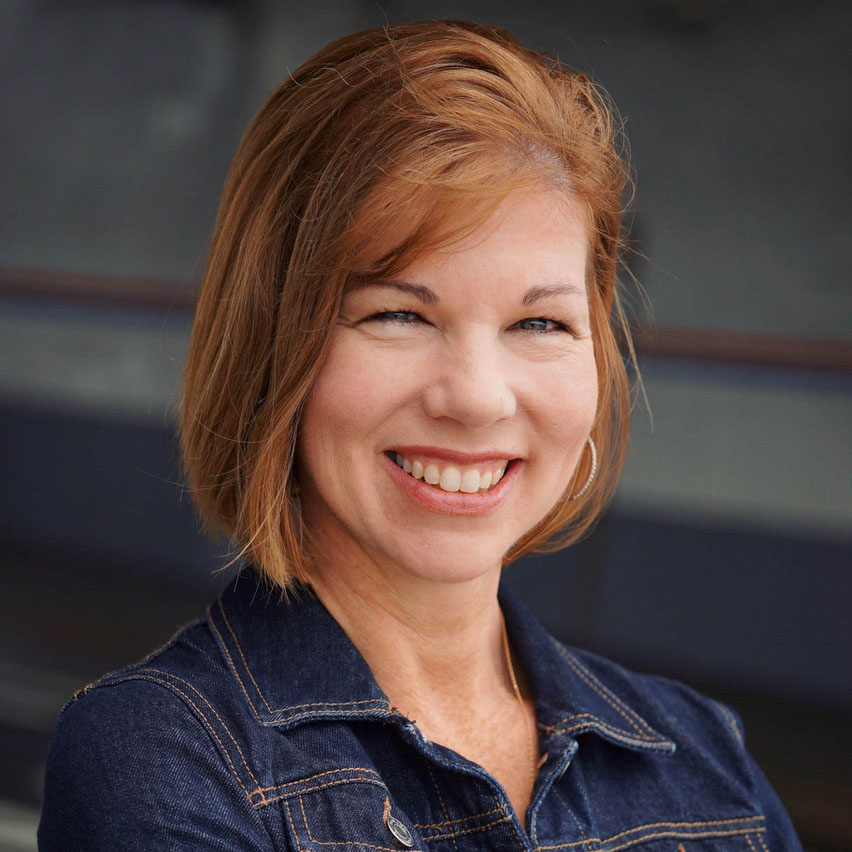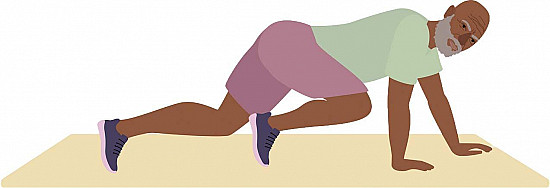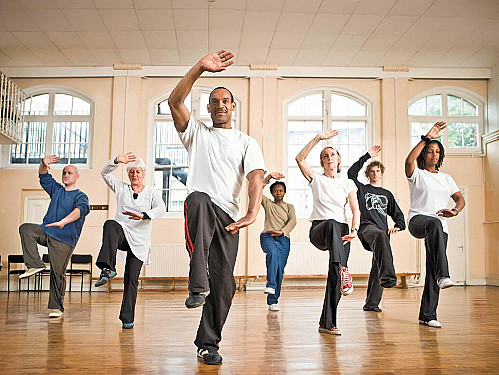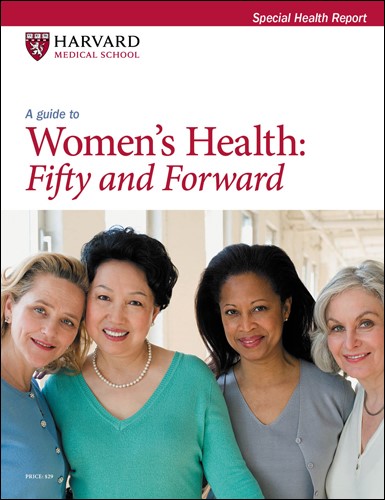Beyond the milestone: Health goals for your 50s onward
Supporting a vibrant old age starts long before you get there.
- Reviewed by Toni Golen, MD, Editor in Chief, Harvard Women's Health Watch; Editorial Advisory Board Member, Harvard Health Publishing; Contributor

Ideally, reaching your 50s feels like hitting your stride. Once-lofty goals — raising a family, climbing the career ladder, traveling far and wide — are now threads in the rich tapestry you've spent decades creating.
But there's every reason to expect you'll keep weaving. With the average life expectancy in the United States hovering around 77.5 — and topping 80 for women — you likely have decades more to plan. And this strategizing should include reflecting on your health and ways to maximize it going forward, Harvard experts say.
"What you do in your 50s will definitely pay dividends or harm you in the longer term, so it's really a decade to start setting some health goals," says Dr. Deborah Kwolek, an internal medicine doctor and menopause expert at both Harvard-affiliated Massachusetts General Hospital and Brigham and Women's Hospital.
The timing is especially apt since the odds of developing a chronic disease such as arthritis, diabetes, or heart disease rise as we hit the half-century mark and beyond. Nearly 95% of adults 55 and older have at least one chronic condition, while nearly 80% have two or more, according to the National Council on Aging.
Our 50s are also when many of us are in the thick of menopause, coping with hormone fluctuations and related symptoms such as hot flashes, vaginal dryness, achy joints, and brain fog. Diminished estrogen levels also boost our risks for high blood pressure, prediabetes, heart disease, and thinning bones.
These health issues can chip away at our ability to optimize the years ahead—to do everything we want and feel good while we're doing it.
"If you're someone who feels young and healthy at 50, you may think the party goes on forever and you can keep doing the same things you did at 30," says Dr. Daniel Sands, a primary care doctor at Harvard-affiliated Beth Israel Deaconess Medical Center. "But we often think about 50 as when aging really starts. You get your first AARP card, but it's also a bit of an inflection point in your risk for heart disease and various cancers. The longer we wait to take stock of our health, the worse it can get."
What to aim for
Dr. Sands and Dr. Kwolek highlight an array of worthwhile health goals, why they're relevant, and ways to accomplish them:
Improve your balance. "Most people are not going to be falling when they're 50, but the things we do when we're 50 have a bearing on what happens when we're 80," Dr. Sands says. "Balance is a crucial issue."
Indeed, falls are the leading cause of injury for adults 65 and older, according to the CDC. Avoiding that scenario can be as simple as incorporating balance-boosting activities into your daily routine, including dancing, tai chi, yoga, and alternately standing on one foot for a minute or longer.
"Make sure your eyes and ears are healthy too," Dr. Kwolek says. "Fifty is still young for this, but if you have hearing or sight problems, that can lead to balance problems."
Learn a new skill. Always wanted to take up piano or speak Mandarin? Starting now offers more than a dose of midlife novelty: research indicates it might also stave off cognitive decline.
"Learning a new skill is helpful because we're getting outside our comfort zone, which helps keep our brains sharp," Dr. Sands says. "It's also helpful from a mental health standpoint."
Seek age-appropriate cancer screenings. Aging is the top risk factor for developing cancer, according to the National Cancer Institute. But screening tests can detect abnormal cells early, increasing your odds of beating the disease. By your 50s, you should already have been screened for breast, cervical, and colorectal cancers. If you've been a smoker, you should also ask your doctor about low-dose CT lung cancer screening.
"Fifty is a bit of an artificial cutoff, because there's a continuum of risk," Dr. Sands says. "It's certainly the latest point we want to start screening for these things, the tipping point."
Prioritize your bone health. Bone loss starts to ramp up around age 50, especially in women. We're four times more likely than men to develop osteoporosis as older adults, placing us at higher risk of devastating fractures that can prove debilitating or even shorten our lives.
Medications and lifestyle measures — such as beefing up calcium and vitamin D intake — can mitigate the problem, and so can weight-bearing exercise. Hormone therapy can also help, since 10% of women's bone mass is lost in the two or three years surrounding the menopausal transition, says Dr. Kwolek.
"It's a pain point for women because we have both hormone- and age-related bone loss, and it accelerates in our 50s," Dr. Kwolek says. Without treatment, "a fair number of women suffer osteoporotic fractures as they get into their 60s."
Maintain muscle strength. Few things gird your body better for healthy aging than strong muscles. But we start losing muscle mass in our 30s, a process that accelerates dramatically as decades accrue. An underappreciated fact is that muscle loss doesn't just weaken us; it also contributes to slowing our metabolism, fueling weight gain, Dr. Sands notes.
Strength and resistance training is the best antidote. "It's really foundational to your health, and not something you should put off," Dr. Kwolek says. "I hear stories about people who start working out in their 60s and 70s, and they definitely benefit, but ideally you should start younger."
Maintaining robust muscles "doesn't require spending hours and hours in the gym or even having a gym membership," Dr. Sands notes. "You can do so much to improve your muscle mass simply by doing body-weight exercises at home, such as planks, squats, wall sits, lunges, and push-ups."
Pay closer attention to diet. Speaking of muscle loss, eating sufficient protein works in tandem with exercise to help stem the problem. Look to protein-rich foods such as fish, tofu, poultry, eggs, nuts, and lentils.
"We need more protein than most people take in," Dr. Sands says. "Eat protein with at least two of your meals every day. It's going to be hard to hold on to muscle mass unless you have the building blocks."
It's also wise to aim for a plant-forward diet that limits or eliminates red meat and processed foods. "The dietary choices we make affect our weight as well as our risks for heart disease and cancer," Dr. Sands says.
Imagining success
Granted, much of this health advice is valid regardless of age. Why pay closer attention now? Not solely to live longer, Harvard experts say.
"If you're serious about taking care of your health now, you're extending the part of your life where you're fit and well," Dr. Kwolek says.
Dr. Sands drives this point home by asking patients what kind of life they imagine when they're 70, 75, or beyond. "Do you want to be active with your partner? Enjoy your grandchildren? Be able to travel? What goals do you have, and how are you going to achieve them?"
"Part of it is making sure your vehicle — your body — is going to be able to support you in these goals," he says. "By the time you're a half-century old, your body is starting to break down. Although there are no guarantees, you can do things to avoid falls, frailty, cancer, and heart disease. You should do what you can to tip the odds in your favor."
Image: © fcafotodigital/Getty Images
About the Author

Maureen Salamon, Executive Editor, Harvard Women's Health Watch
About the Reviewer

Toni Golen, MD, Editor in Chief, Harvard Women's Health Watch; Editorial Advisory Board Member, Harvard Health Publishing; Contributor
Disclaimer:
As a service to our readers, Harvard Health Publishing provides access to our library of archived content. Please note the date of last review or update on all articles.
No content on this site, regardless of date, should ever be used as a substitute for direct medical advice from your doctor or other qualified clinician.
















